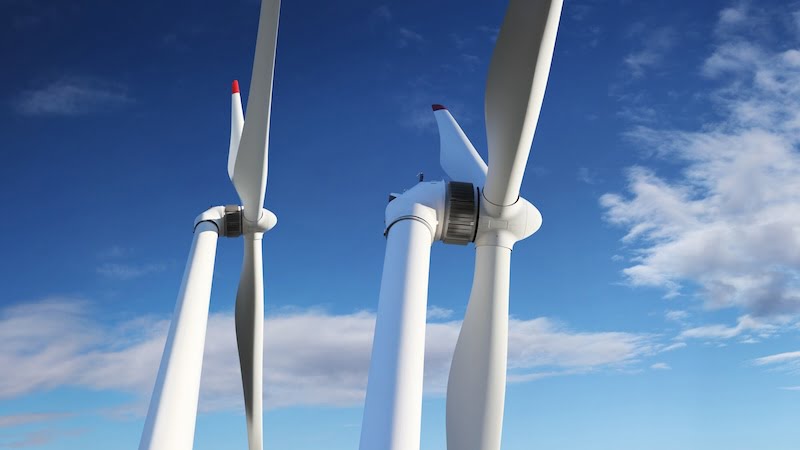
Researchers from the USA have discovered that wind turbines can steal wind from each other. The so-called wake effect can reduce electricity production by more than 30 percent.
Wind turbines can steal wind from each other. This is what a new study from the USA has shown. A research team from the University of Colorado Boulder looked into the question of how much energy wind farms can actually produce.
The reason for the study was the increasing demand for electricity in the United States. To meet this demand, many cities on the east coast are relying on offshore wind projects in the Atlantic. However, it is still difficult to predict how much wind energy the turbines will actually generate.
Wake effect: How wind farms lose power
Based on the results of their study, the researchers estimate that offshore turbines are stealing wind from each other. As a result, wind farms in the Atlantic are losing more than 30 percent of their output. The scientists call this the “wake effect.”
It occurs when the wind passes through the turbines and the turbines in front or upstream take energy from it. As a result, the wind speed behind the turbines slows down. The result: less electricity is generated.
The wake effect is particularly pronounced in offshore wind turbines, as there are no houses or trees to stir up the air. This would help to disperse the wakes. Under certain weather conditions, they can also reach up to 55 kilometers and affect other wind farms.
Especially on hot summer days, when the air above the cool sea surface remains stable, wakes can persist longer and spread further.
Biden administration plans expansion of offshore wind farms
In early 2024, five large wind turbines off the coast of Massachusetts delivered the first load of wind energy to the New England grid. Additional turbines are to be built off the coasts of Rhode Island, Virginia and New York.
The administration of US President Joe Biden wants to install 30 gigawatts of offshore wind capacity by 2030. That would be enough to supply more than ten million households with electricity for a year.
“The United States is planning to build thousands of offshore wind turbines,” explains Julie K. Lundquist, professor in the Department of Atmospheric and Oceanic Sciences. “So we need to predict when these waves will be expensive and when they will have little impact.”
Studies on wake effect could support network operators
Electricity consumption in the United States is rising rapidly, driven in part by the increasing proliferation of electric vehicles, data centers, and manufacturing facilities. However, wind and solar energy are variable compared to fossil fuels because the sun doesn't always shine and the wind doesn't always blow.
This poses challenges for grid operators, explains Lundquist. The power grid is a complex system that requires a perfect balance of supply and demand in real time. Imbalances can cause devastating power outages. In 2021, this killed nearly 250 people in Texas. “With better wind energy forecasts, we can rely more on renewable energy,” explains the researcher.
Also interesting:
Source: https://www.basicthinking.de/blog/2024/06/01/wake-effekt/


